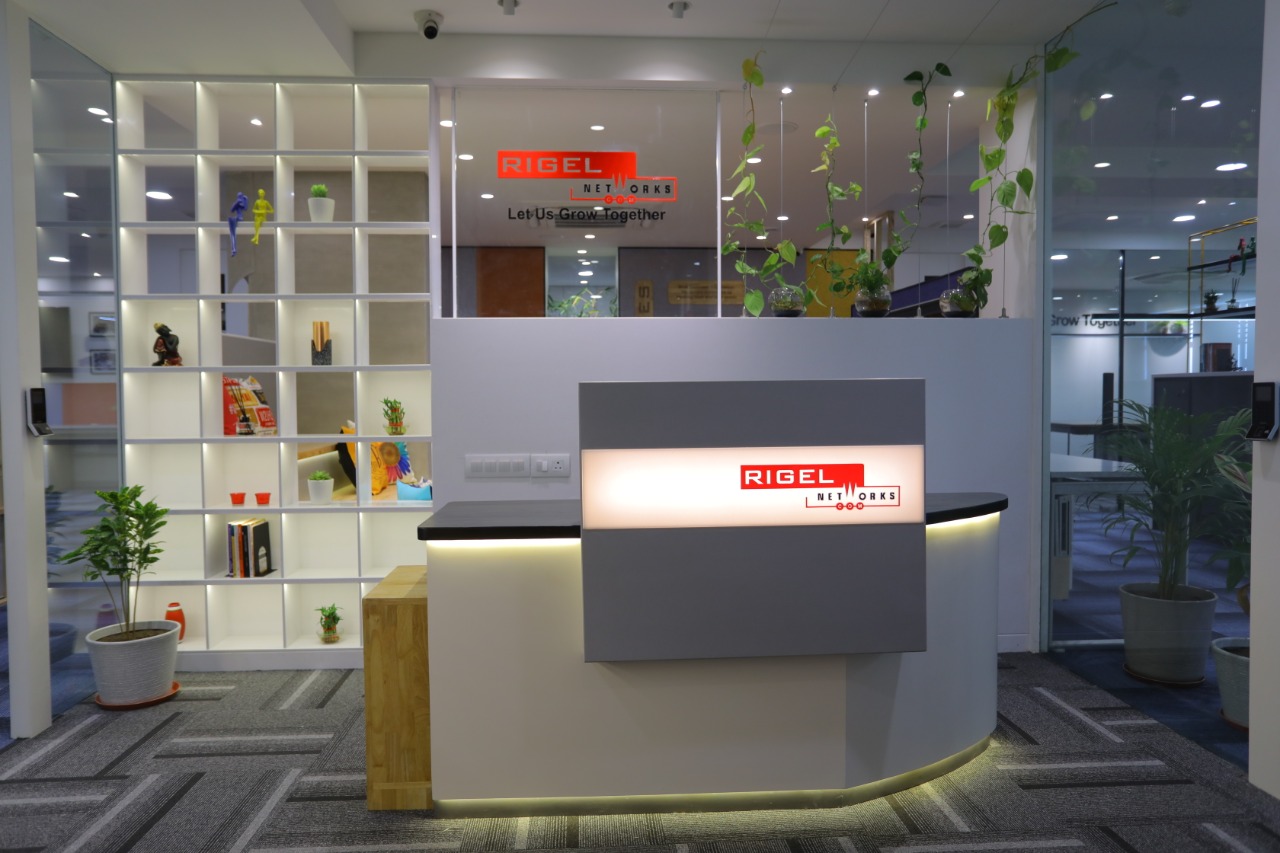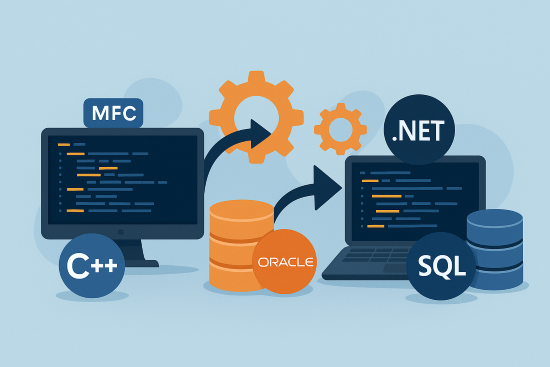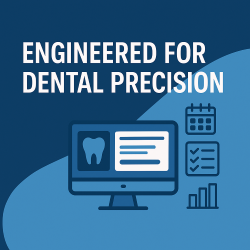Client Profile / Industry Context
Our client, a leading enterprise software solutions provider operating in highly regulated industries, faced mounting challenges managing aging mission-critical applications. Over the years, their legacy VC++ desktop systems and Oracle databases became difficult to maintain, scale, and integrate into modern cloud-first enterprise ecosystems. To maintain competitive advantage and ensure long-term sustainability, a full-stack modernization program was initiated.
The Challenge / Trigger
The client’s core business applications were originally developed over a decade ago using VC++, MFC, proprietary libraries, and Oracle PL/SQL. These systems supported complex workflows but had become fragile due to:
-
Lack of functional documentation and highly entangled code structures.
-
Tight coupling of business logic within the UI layer.
-
Obsolete custom-built VC++ libraries no longer supported.
-
Difficulty integrating legacy apps with modern web platforms.
-
Rising Oracle licensing and maintenance costs.
-
Limited scalability and future readiness.
With growing business demands, cloud adoption, and user expectations for responsive web-based experiences, a comprehensive modernization was no longer optional — it was a business-critical imperative.
What We Delivered
| Service Type | What We Did |
|---|---|
| Legacy Code Understanding & Reverse Engineering | Deployed expert legacy application team to analyze VC++ code structure, global variables, and custom data structures. Paired developers with business users to extract undocumented functional behavior. |
| VC++ to .NET Migration | Refactored procedural VC++ code into modular C# ASP.NET MVC architecture using repository patterns, dependency injection, and layered separation of concerns. |
| Custom VC++ Library Replacement | Replaced obsolete VC++ libraries with modern .NET equivalents like System.IO, System.Math, and serialization frameworks; developed C++/CLI wrappers for critical legacy functions. |
| Desktop-to-Web UX Modernization | Redesigned complex MFC user interfaces into responsive, mobile-ready web applications using Razor Pages, Bootstrap, AJAX, and SignalR for real-time updates. |
| State Management Transition | Implemented distributed session management, TempData, and caching strategies for stateless web architecture. |
| Authentication & Authorization Upgrade | Replaced legacy hardcoded authentication with ASP.NET Identity and role-based access management using Active Directory integration. |
| Data Access Transformation | Migrated from embedded DBI calls to ORM-driven data access using Entity Framework Core with Code First and Database First strategies. |
| Error Logging & Observability | Integrated structured logging using Serilog, Application Insights, and proactive crash analytics. |
| Oracle to SQL Server Database Migration | Full-scale conversion of PL/SQL stored procedures, triggers, cursors, and sequences to T-SQL equivalents, utilizing SSMA and custom scripts. |
| Data Transfer Optimization | Migrated billions of rows using parallel BCP, SSIS batch mode, and delta copy synchronization for minimal downtime cutover. |
| Data Validation & Testing | Employed hash-based record-level diffing tools to ensure complete data integrity across platforms. |
| Environment & Test Matrix Setup | Established multi-browser, multi-device QA environments simulating real-world customer usage. |
Before vs After (Transformation Snapshot)
| Metric | Before Migration | After Modernization |
|---|---|---|
| Code Maintainability | Fragile monolithic VC++ | Modular, service-oriented .NET |
| UI Responsiveness | Desktop-only MFC | Responsive Web UX |
| Business Logic | UI-coupled procedural code | Decoupled MVC architecture |
| Authentication | Hardcoded Windows Auth | ASP.NET Identity, AD Integration |
| Reporting Speed | Manual multi-step extracts | Real-time dashboards |
| Database Cost | High Oracle licensing | Optimized SQL Server costs |
| Data Validation | Manual, error-prone | Automated checksum validation |
| Change Deployment | High risk, downtime | CI/CD enabled with rollback support |
| Observability | No central logs | Full observability via Application Insights |
Outcome & Business Impact
-
Reduced operational overhead by 40% through technology stack consolidation.
-
Eliminated significant Oracle licensing costs with full SQL Server migration.
-
Improved system performance and scalability for future growth.
-
Enabled cloud-readiness and integration flexibility with modern APIs.
-
Minimized end-user disruption via carefully staged cutover plans.
-
Strengthened security posture with role-based access control and structured authentication mechanisms.
How the Client Viewed Us
Rigel Networks delivered far beyond traditional development—they were our modernization partner. Their ability to reverse-engineer legacy systems, deeply understand both technology and business logic, and execute flawlessly made this complex transition seamless.”
-
Trusted Partner for Legacy Modernization
-
Technology Advisor for Future-State Architecture
-
Full Delivery Ownership with Minimal Client Overhead
Key Takeaways
✔ Legacy modernization is not a simple code migration — it’s a holistic business enablement exercise.
✔ Reverse engineering expertise reduces long-term technical debt.
✔ Pairing domain-aware teams with business SMEs unlocks hidden functional knowledge.
✔ Database replatforming requires hybrid automation + expert manual tuning.
✔ Full-stack modernization drives both cost savings and strategic flexibility.
Related Solutions / Engagements
Welding Process Specification Manager (for same client’s QA system)
Digital Signature Workflow (deployed in subsequent phases)
Enterprise Document Management Platform (modernization of older file-based workflows)
Let’s Discuss Similar Outcomes for You
Looking to modernize your legacy VC++, Oracle, or MFC-based systems? Whether you’re struggling with skill gaps, documentation black holes, or complex migrations, we bring proven frameworks and deep technical expertise.









